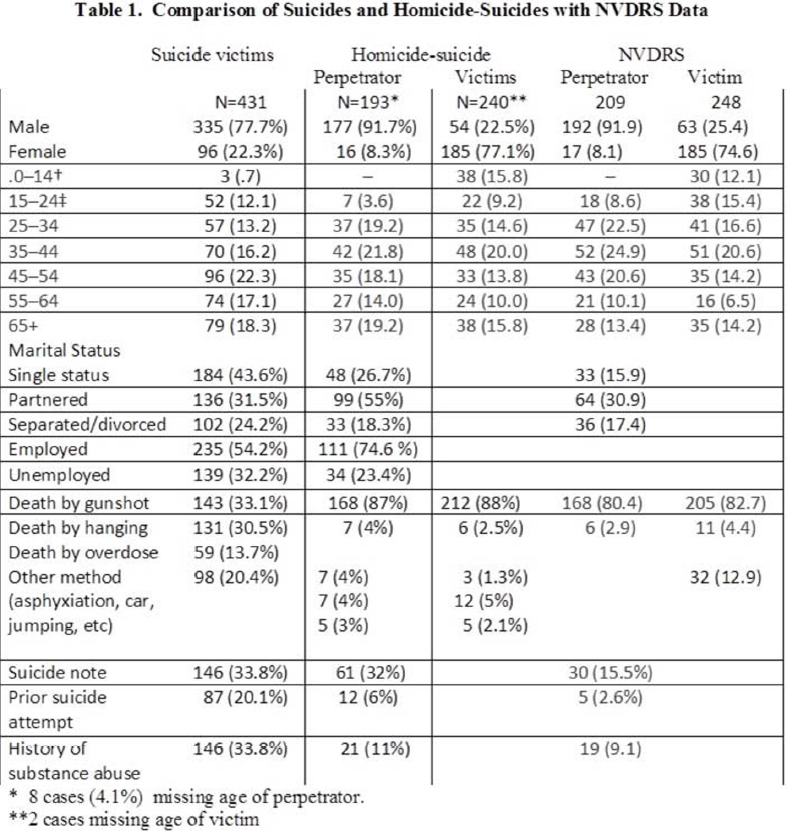No CrossRef data available.
Published online by Cambridge University Press: 15 April 2020
Gaps in crises of mental health include differentiating between various types of lethal violence of people who suicide and those who murder and then kill themselves and the role, if any, that substance use has in the outcome. In this study, a sample of medical examiner investigative and toxicology reports from Los Angeles and Orange counties in California were available for analysis for 432 suicide cases and 193 homicide-suicide cases.
Significant differences noted were levels of alcohol were higher in suicide victims than homicide-suicide perpetrators (p=.004). Homicide-suicide perpetrators had almost twice the level of stimulants in their system than suicide victims (p = .022) but did not have elevated levels of drugs or alcohol compared to suicide deaths.
Predictors of suicide included: substance abuse history, high number of drugs in system, death inside a house, and legally impaired by alcohol. Further, the cause of death was most often by gun shot or hanging. Predictors of homicide-suicide included gun shot as the cause of death, female gender, domestic conflict, children living in the home, and prior arrest for substance abuse.

Comments
No Comments have been published for this article.